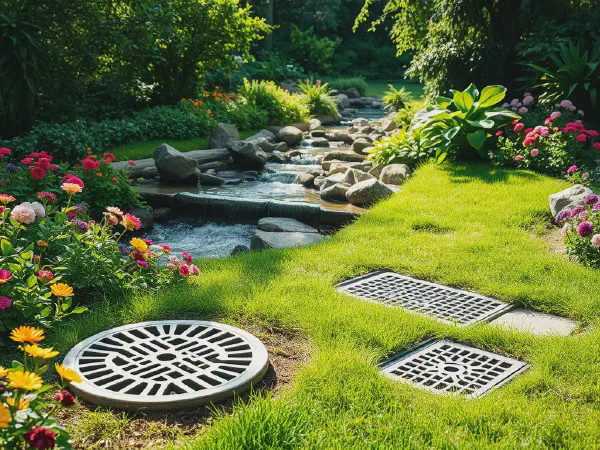Effective Best Practices for Maintaining Your Drains

Best Practices for Maintaining Your Drains
Maintaining your drains is essential for preventing costly repairs and ensuring a smoothly functioning plumbing system. High-quality drainage is crucial for any home; thus, understanding the best practices for maintaining your drains can help you save time, money, and effort down the line. From routine cleaning to preventive measures and even DIY solutions, every homeowner can benefit from maintaining their drains effectively. In this article, we will explore the Best Practices for Maintaining Your Drains to ensure they remain in good condition for years to come.
To begin with, regular cleaning techniques are vital for effective drain maintenance. Using household items like vinegar and baking soda can eliminate minor clogs and unpleasant odors while breaking down grease and build-up within the pipes. Additionally, always consider scheduling professional drain cleaning. By having an expert inspect and clean your drains, you can avoid larger issues that might arise from neglecting your plumbing system. Embracing these practices as part of your routine can significantly enhance the longevity of your drains and plumbing.
Another aspect of the Best Practices for Maintaining Your Drains involves adopting preventive measures. Installing drain covers or screens can effectively catch hair and debris before they enter your plumbing system. Educating your family members about what should and shouldn't go down the drain can also contribute to reduced clogs. Lastly, regular inspections and maintenance of pipes can identify potential weak points before they lead to more significant issues. Proactive care is always better than reactive solutions.
It's essential not to overlook the importance of identifying drain issues early. Homeowners should be aware of signs of slow drainage, such as water pooling in sinks or tubs. Additionally, foul odors emanating from drains can indicate organic build-up or blockages that need immediate attention. Lastly, keep an eye out for water backups in your home, as these are critical signals that your drainage system is malfunctioning and requires attention. Recognizing these signs early can prevent more severe issues from developing.
In case of emergencies, knowing proper drain care is invaluable. If a drain is completely clogged, avoid panicking; first, try using a plunger to dislodge the blockage. In more severe cases, a plumbing snake can be a more effective tool for clearing stubborn obstructions. However, if these DIY solutions don’t work, it’s crucial to know when to call a professional plumber. Having access to professional help not only ensures that the problem is resolved efficiently but also prevents any damage that may arise from improper handling of the situation.
Regular Cleaning Techniques
One of the simplest methods for maintaining your drains is through regular cleaning techniques. A natural and effective solution involves using vinegar and baking soda. Start by pouring a pot of boiling water down your drain to loosen any debris. Then, add half a cup of baking soda followed by half a cup of vinegar. Allow the mixture to fizz for about 30 minutes before flushing it with another pot of boiling water. This process can help break down any build-up and keep your drains flowing smoothly.
While homemade solutions are great for regular maintenance, it's also essential to consider professional drain cleaning services. These experts have specialized equipment designed to tackle severe clogs and can offer comprehensive inspections of your plumbing systems. Scheduling these services annually or bi-annually can significantly reduce the chances of future issues, ensuring your drains are clean and functioning optimally.
In addition to cleaning, an excellent way to prevent clogs is through regular maintenance practices. Utilize a strainer in sinks and tubs to catch hair, food particles, and other debris. Regularly check traps and clean them as needed to maintain smooth water flow. Making these techniques part of your routine can keep drains trouble-free and extend their lifespan.
Preventive Measures
Preventive measures are a critical component of the Best Practices for Maintaining Your Drains. One of the simplest preventive measures to take is installing drain covers or screens. These can effectively catch debris and dirt, preventing them from entering your plumbing system. Make it a habit to clean these covers regularly to ensure optimal performance and prevent water from backing up.
Educating household members about what to avoid putting down the drains is another practical preventive measure. Common culprits include grease, food scraps, and hair. Teaching everyone in your household about the proper use of sinks and toilets can play a significant role in reducing clogs and drainage issues in the future.
Additionally, regularly inspecting and maintaining your pipes can help advance the overall health of your drainage system. Look for signs of leaks, corrosion, or damage. If any issues are found, addressing them promptly can prevent minor problems from escalating into more significant headaches later on. Proactive maintenance will be beneficial in preserving the integrity of your pipes.
Identifying Drain Issues Early
Recognizing drain issues early is a critical practice that can save you both time and money. Watch for signs of slow drainage, such as pooling water around your sinks, tubs, or showers. This phenomenon is often indicative of a build-up or blockage that should be addressed before it worsens, leading to significant problems.
Foul odors emanating from drains are another vital sign that something is wrong. These odors can signify organic material or grease buildup within the pipes which can attract pests and lead to more substantial issues. If you notice any foul smells, it's essential to inspect and clean the drains immediately to prevent further complications.
Water backups in your home are a severe warning sign that your drainage system is malfunctioning. If you experience this issue, it's crucial to take action right away, as it can lead to water damage, mold growth, and costly repairs. Understanding these early warning signs can empower you to address minor problems before they escalate.
Emergency Drain Care
In the unfortunate event that a drain becomes completely clogged, having emergency drain care knowledge is invaluable. Your first step should be to try using a plunger. This effective tool can help dislodge minor blockages using suction and pressure. If this does not work, you may need to look at using a plumbing snake to reach deeper clogs that can't be removed by conventional means.
When faced with an emergency situation, understanding the difference between using a plunger or a snake is essential. A plunger is generally the first line of defense for minor clogs, while a plumbing snake is more suited for stubborn obstructions deeper in the piping system. If both tools fail, it’s time to seek professional assistance.
Knowing when to call a professional plumber is vital for effective drain maintenance. If you face persistent drain issues despite your best efforts, it’s crucial not to delay assistance. Professional plumbers can perform thorough inspections and repairs that may be necessary to solve complex problems. Don't hesitate to seek help whenever issues arise, as this can save you from further complications and expenses.
DIY Drain Maintenance
For homeowners looking for cost-effective solutions, there are many ways to address common drain problems with DIY methods. Utilizing homemade solutions can often resolve issues without the need for professional intervention. For instance, a mixture of baking soda and vinegar can serve as an excellent remedy for minor clogs. Be attentive to using these solutions regularly to keep your drains clear.
If you prefer a more hands-on approach, following a step-by-step guide to unclogging drains at home can empower you with the skills to handle minor emergencies. Start with a plunger, then consider using a drain snake or a hook if the clog persists. Learning these techniques can save you from waiting for a plumber at inconvenient times.
Lastly, every homeowner should have a set of essential tools for drain maintenance. Items such as a plunger, plumbing snake, and a bucket for catching debris can make a world of difference when dealing with unexpected clogs. With proper tools and knowledge, you can effectively maintain your drains and tackle minor emergencies whenever they arise.
